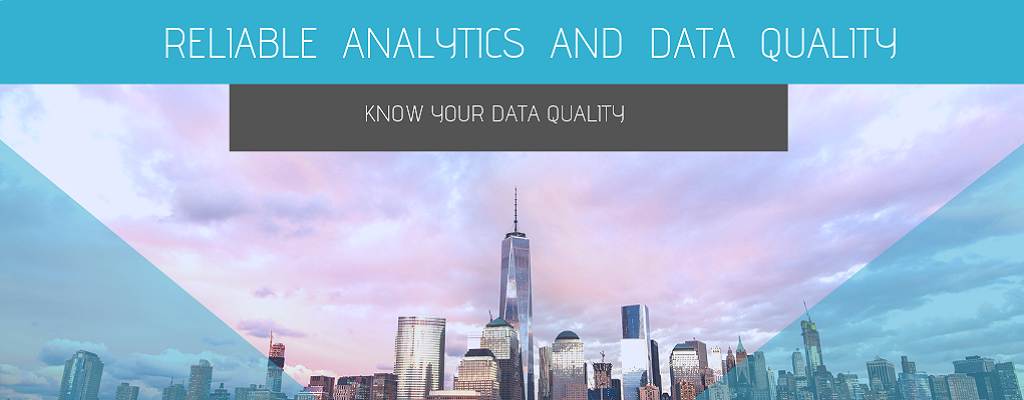Reliable Analytics And Data Quality
With increasing adoption of big data and data-fueled decision making, data quality is an important parameter and its significance is increasing tremendously.
In order to make informed and fact-based decisions companies have started showing great interest in data quality management as this would ensure that analytics are trustworthy. High-quality data gives us accurate and reliable information.
Things will get done only if the data is cleared
But this is easier said than done. Improving and maintaining quality of data is one of the major challenges faced by the enterprises today. Poor quality of data directly affects the reliable data analytics which are used to make decisions. For reliable analytics and better decisions it is essential for companies to implement the following:
How To Improve Data Quality:
Collect and Access Relevant Data:
Your company may be capable of migrating huge amounts of data in lesser time, but not all data is relevant for analysis. The collected data should be searchable and retrievable easily. If analysts cannot locate the data stored or access them as and when required, then the decision-making process will be delayed. Your data quality begins with data collection, the way in which you collect and retain data is important. The ability to find relevant information can be improved if there’s well-organized metadata that includes qualitative descriptions of what the data sets contain, where they are located, and how to access the data. So start by defining the types of data that are important and relevant to your company and analyze the significant need of users that will help your business. Further to that, tone down on the amount of data you assimilate in one.
- Know your data while collecting it and validate the data – it is important to ensure that data fields, calculations and formulas are tested for accuracy and consistency across all points of entry.
- Adding new data from new sources requires a higher level of security testing process to protect against improper data conversion or data loss.
Improve Existing Data Quality:
Organizing data with relevance to the analysis it supports, will enable you to remain in control of data quality while improving the efficiency of analysis. When you have the right plan in place for improving data collection, you need a method/model for validating and managing stored data – this paves way for reliable data analytics.
- Completeness: Check whether the data values are missing?
- Validity: Does the data match the rules?
- Uniqueness: Is that data duplicate?
- Consistency: Is the data consistent across various marts?
Consolidating data into a single system gives you much more control over the integrity of data coming in and going out, this helps with trend analysis & gaining industry insights. Optimized data quality & governance, improve decision-making and reduce costs.
Clean Your Data:
Cleanse data regularly. The process of analyzing and correcting messy raw data is essential for data analysis. When doing data organization to make strategic decisions, you must do thorough data cleansing process. Good analysis depends highly on clean data – it is as simple as that. Data cleansing will help to ensure data analysis is centered around the highest quality, most current, complete, and relevant data.
- Unclean data is often caused by basic formatting issues. in the right manner. As the formats differ and run through a series of imports and exports, the data issues exponentially grow.
- Duplicate data can occur from multiple databases that repeat the same metrics, this is where two records in the same table have the same code or key but may not have different values and meanings which can happen when you are merging the data, or data from non-database sources like text files or excel files, uniqueness might be lost when it happens. While building and consolidating your data warehouse, always remove duplicates and fill incomplete fields.
Data Normalization:
Data normalization is little decisive because data is collected from various sources and may include a variety of spelling options. It confuses the CRMs as they see them as different data points. Thus, data standardization is essential to avoid errors in the data fields and to remove redundancy.
When data is collected from different sources, it often contains inconsistencies or errors in terms of how different words are spelled. For instance, when entering an employee or any person name incorrectly or misspelled, these small deviations can make a big impact on data analysis. You have to make all information as standard, make sure your data remains uniform throughout.
Data Segmentation and Management:
After the cleansing process, data segmentation is needed for a more detailed and focused analysis even though your data is clean, well-organized, and high quality. Understand what you are trying to achieve from data analysis and what is the requirement for your business, then sort data into relevant groupings into various data subsets, which make data analysis easier by breaking the information down into smaller data subsets which improve accuracy, enabling you to focus in on highly specific trends and behaviors.
Centralizing the management of business-relevant metadata is required because as the number and variety of data sources grow, situations can occur when end users in different parts of an organization will misinterpret some of the data concepts. Metadata management will help to reduce inconsistent interpretations.
Bottom Line:
Data quality is important for ensuring that your data analysis is both accurate and easy. Data management and data quality are key ingredients to analyzing data more effectively. Make this a regular exercise to ensure all data captured is of the highest quality.





